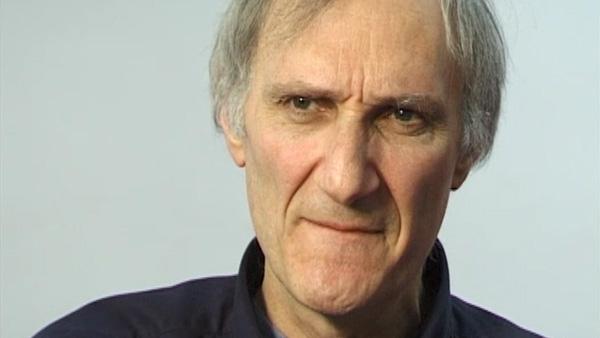NEXT STORY

Homosexual brains are different
RELATED STORIES

NEXT STORY

Homosexual brains are different
RELATED STORIES


|
Views | Duration | |
|---|---|---|---|
| 11. Transsexual brain | 543 | 05:58 | |
| 12. How social behavior can change brain structure | 316 | 03:16 | |
| 13. Homosexual brains are different | 393 | 02:08 | |
| 14. Doing experiments inspires me | 310 | 01:13 | |
| 15. Stumbling upon cell death | 298 | 05:07 | |
| 16. Why cell death is important | 275 | 07:20 | |
| 17. Cells continuously want to kill themselves | 284 | 04:23 | |
| 18. What to do when you fall ill | 388 | 01:53 | |
| 19. How to find a good doctor | 402 | 00:43 | |
| 20. 'Thinkers' versus 'doers' | 1 | 629 | 02:48 |


Now, it turns out the amount of sex hormone that the foetus is exposed to varies enormously apparently during pregnancy for reasons that are not well-understood and so it could very well be that the levels of these hormones, the degree to which your brain is masculinised, has a huge impact on your later behaviour.
But even more remarkable, and this is something I just discovered a few weeks ago when I was visiting Barres actually in… in Stanford, is that behaviour… social behaviour can influence your brain in rather dramatic ways which is something I must confess I… I didn’t realise, and it’s dramatically illustrated in studies of this particular kind of fish that’s found in Africa and Asian lakes, cichlid fishes, and there’s a guy called Russ Fernald at Stanford who studies them. So this, it’s a miracle really, it’s so interesting.
If you look at the male fish, they’re divided into two kinds of social behaviours. There’s the territorial ones at about 20% that are constantly… I got interested in this because I saw them in his tank and some of these males were just constantly shooting around in the tank, fighting off anything that came into this territory, and 20% of the males do that. These males are brightly coloured, they’re bigger than the 80% of males who look like females and swim with the females and behave like females, and they’re sexually inactive so the only sex going on is this 20% of males.
Now, they’re not only brightly coloured and bigger, but their brains are different. You go into the region of the brain that’s very important for sex and their neurons are four or five times larger than in the 80% of males who are behaving differently, and their testicles are three, four times larger. Here’s the miracle: you take one of these territorial males and put it in a tank with another territorial male that’s bigger than he is, within seconds his colour is gone, his behaviour is now like the 80% non-territorial, and within a few weeks his testes have shrunk and those critical nerve cells in his brain have shrunk.
If you do the experiment the opposite way, you take a non-territorial male, put him in a tank with a non-territorial male that’s smaller, within seconds he becomes a territorial male, he’s brightly coloured, starts to grow faster and these brain cells within a week are three to four times larger. So here your social status is influencing your brain in this dramatic sort of way, and behaviour and brain are very closely tied in this dramatic way.
So when you see a homosexual or a transsexual and so on, how much of the brain difference is behaviourally determined, and how much of it is hormonally determined during this critical period, and how much of it is genetic? I mean, these are really interesting questions that very few people study, I mean, almost no one. Quite remarkable.
Martin Raff is a Canadian-born neurologist and research biologist who has made important contributions to immunology and cell development. He has a special interest in apoptosis, the phenomenon of cell death. Recently retired from his professorship at University College, London, these stories were recorded in 2000.
Title: How social behavior can change brain structure
Listeners: Christopher Sykes
Christopher Sykes is a London-based television producer and director who has made a number of documentary films for BBC TV, Channel 4 and PBS.
Tags: Stanford University, Ben Barres, Russell Fernald
Duration: 3 minutes, 16 seconds
Date story recorded: 2000
Date story went live: 13 July 2010